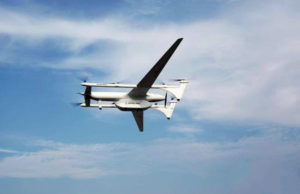Wi-Fi, fiber optics and motorcycles spread the Internet
PARIS: Breakthroughs in the delivery of the Internet have created a variety of ways to spread high-speed Internet in developing countries, in some cases bringing remote regions online more rapidly than expected.
These technologies, although mainly used to bring broadband access to customers in wealthy countries, are now being employed to upgrade and leapfrog Internet delivery networks in developing countries.
«The penetration of broadband in developing markets suddenly feels like 1999 in Europe and North America,» said Michel Rahier, president of fixed communications at Alcatel-Lucent. «The broadband equipment we sell into developing markets has increased from a small percentage to a significant amount.»
Rahier cited the example of Venezuela, where he expects the 500,000 broadband lines installed during the past two and a half years to double by the end of 2007.
Broadband may be arriving quickly in some developing countries, but more still needs to be done to encourage it, said Hamadoun Touré, secretary general-elect of the International Telecommunication Union.
«The growth of broadband in developing nations has been tremendous, but it should be faster, and the price for access is still too high,» said Touré, who in January takes over as head of the UN agency that is charged with overseeing telecommunications issues.
«The wireless technologies arriving now present us with a great opportunity to leapfrog and create economic opportunities for businesses based on broadband.»
The overall penetration of broadband in developing countries is difficult to measure, but many of them are showing a rapid acceleration, according to the United Nations Conference on Trade and Development, known as Unctad.
«Accurate statistics just are not there, but anecdotal evidence is that broadband is quickly becoming much more widespread in developing countries,» said Scarlett Fondeur, an economic affairs officer at Unctad. «Government policies end up being more important than the actual technologies in determining the pace of adoption.»
Developing economies with available data showing fast rates of broadband adoption include Morocco, which had more than a hundredfold increase in adoption, to 249,000 subscribers in 2005 from 2,000 in 2002.
Malaysia increased from 19,300 broadband subscribers in 2002 to more than 490,000 in 2005, while Argentina increased from 115,000 broadband subscribers in 2002 to 841,000 in 2005.
«We are entering a new wave of deployment for developing markets,» Rahier said. «When you look at the upcoming technologies for distributing Internet wirelessly, the pace will further accelerate.»
The technologies now being used for delivery of high-speed Internet in developing countries include ADSL, a compression that allows for sending data at high speeds over existing copper wire; Wi-Fi, which allows for the broadcasting of wireless Internet, and fiber-optic networks that have now become cost-effective relative to traditional wires, thanks to the rising cost of copper.
Technologies that are expected to further accelerate the growth of high-speed Internet in developing countries include WiMax, the wireless standard that allows for sending Internet wirelessly as far as 70 miles, or 110 kilometers, and third-generation cellular telephone networks that will become more affordable as equipment costs drop.
The Indian government, which last year set up a joint venture between its Center for Development of Telematics and Alcatel-Lucent to deploy and develop applications for WiMax, aims to get seven million citizens using WiMax, to bring the total number of broadband users to 20 million within three years.
There are about one million broadband users in India now.
«WiMax and the arrival of broadband from other sources will have a large-scale human impact in India,» said R. Poornalingam, chairman of the WiMax research center.
«The most striking change will be pulling down the knowledge divide between rural and urban areas.»
In addition to information for education, Poornalingam said broadband would improve lives by bringing medicine to remote areas.
But that is not to say broadband will eliminate inequities, said Lara Srivastava, a senior policy analyst at the ITU, a United Nations agency.
«It is true that the pace of technological change has been much greater than expected overall,» Srivastava said. «But the changes have not come evenly, and much more should be done.»
Rather than overcoming the digital divide, much of the broadband growth in developing countries is reaching the wealthier residents, Srivastava said.
«You cannot imagine that this new broadband is reaching small villages in Rajasthan,» Srivastava said. «Even if broadband gets there, people then need computers and the ability to use them.»
Srivastava did, however, highlight a number of creative projects bringing broadband access to remote places.
The Nepal Wireless Networking Project has started relaying the Internet into the Himalayas with Wi-Fi, while in Peru the Agricultural Information Project for Farmers of the Chancay- Huaral Valley has been relaying Internet via Wi- Fi to help farmers get information on the market prices of crops.
Another solution is offered by First Mile Solutions, whose motorcycle-mounted mobile units are bringing wireless Internet access to remote villages in the Cambodian jungle.
It is also running similar projects in India, Rwanda and Costa Rica.
Nonetheless, Srivastava said, next-generation mobile phones might offer the best way to bring broadband into remote locations.
«Gaining access via telephone network offers so much more flexibility in price,» Srivastava said. «You can have users on the same network with a $20 phone or an Internet-enabled phone.»
While the equipment for 3G networks remains pricey, it will only be a matter of time until the costs come down, Srivastava said.
Fuente: International Herald Tribune

















